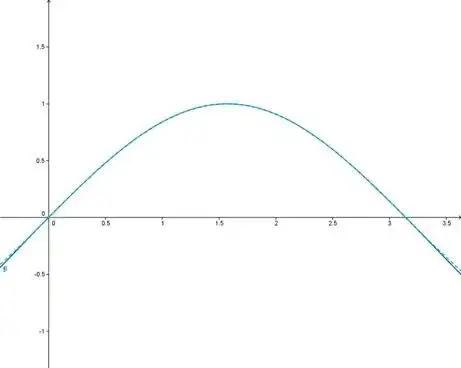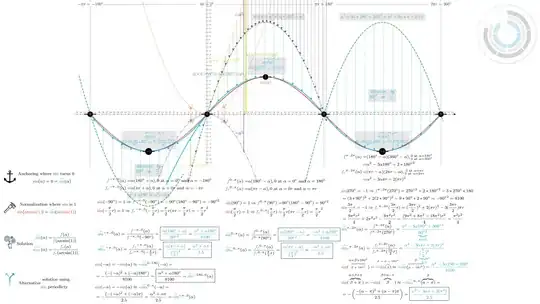This is very close to a Padé approximant, and in this case the formula is simple enough that it's easy to derive. Firstly, we know that $\sin(x)$ is $0$ at $x=0, x=\pi$; this suggests recasting in terms of the variable $y=x(\pi-x)$. What we're after is a first-order rational approximation $\sin(x) = f(y) = \frac{ay+b}{cy+d}$; since we know that $f(y) = 0$ at $y=0$ (i.e., as $x$ approaches $0$ or $\pi$) then the constant term in the numerator is $0$, and after dividing out the approximation takes the form $\frac{y}{a+by}$.
Now, we certainly want our approximation to give $\sin(\pi/2) = f(\pi^2/4) = 1$; this means $\displaystyle{\frac{\pi^2/4}{a+b\pi^2/4}} = 1$, or $4a+b\pi^2 = \pi^2$, or $a=\frac{1-b}{4}\pi^2$. The other relation between $a$ and $b$ presumably comes from trying to match the derivative at $0$, $\left.d(\sin(x))/dx\right|_{x=0} = 1$; the condition for this this can easily be written out in terms of $df/dy$ at $y=0$. I'll spare the arithmetic (unless someone's really curious), but the result works out to be that $a=\pi$; this would give $b=(\pi-4)/\pi$ and the overall approximant $f(y) = \frac{\pi y}{\pi^2+(\pi-4)y}$, but instead the formula uses a second approximation by setting $a=5\pi^2/16$, which (thanks to the first relation) gives a rational value of $b$ (and in fact, the 'nice' value $1/4$). This approximation is equivalent to saying that $5\pi^2/16\approx\pi$, or in other words that $\pi\approx 16/5 = 3.2$; it means a slight error in the slope of the approximation at $x=0$, but that's a fair tradeoff for the ease of calculation gained.

